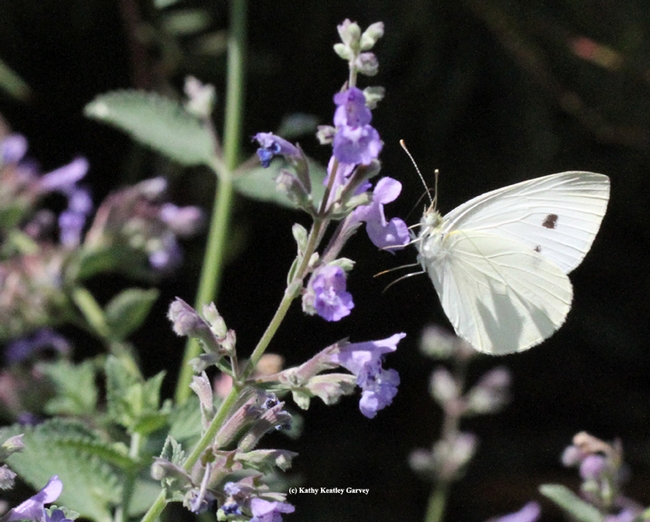
If you collect the first live cabbage white butterfly (Pieris rapae) of 2015 in Yolo, Sacramento or Solano counties and have it verified as the winner, you'll get a pitcher of beer or its equivalent.
Arthur Shapiro, distinguished professor in the UC Davis Department of Evolution and Ecology, is sponsoring his annual “Beer for a Butterfly” contest to draw attention to Pieris rapae and its first flight.
The contest, launched in 1972, is all part of Shapiro's four-decade study of climate and butterfly seasonality. “It is typically one of the first butterflies to emerge in late winter. Since 1972, the first flight has varied from Jan. 1 to Feb. 22, averaging about Jan. 20.”
"I do long-term studies of butterfly life cycles and climate," he said. "Such studies are especially important to help us understand biological responses to climate change. The cabbage white is now emerging a week or so earlier on average than it did 30 years ago here."
Shapiro, who is in the field more than 200 days a year, usually wins his own contest. In 2014, he netted the winning butterfly at 12:20 p.m. Tuesday, Jan. 14 in West Sacramento, Yolo County. It ranked as "the fifth or sixth earliest since 1972."
The professor, fellow of the American Association for the Advancement of Science, the Royal Entomological Society and the California Academy of Sciences, said the cabbage white butterfly inhabits vacant lots, fields and gardens where its host plants, weedy mustards, grow.
The white butterfly, with black dots on the upperside (which may be faint or not visible in the early season), inhabits vacant lots, fields and gardens where its host plants, weedy mustards, grow. It is typically one of the first butterflies to emerge in late winter.
The male is white. The female is often slightly buffy; the "underside of the hindwing and apex of the forewing may be distinctly yellow and normally have a gray cast,” Shapiro says. “The black dots and apical spot on the upperside tend to be faint or even to disappear really early in the season.”
The contest rules include:
- It must be an adult (no caterpillars or pupae) and be captured outdoors.
- It must be brought in alive to the department office, 2320 Storer Hall, UC Davis, during work hours, 8 a.m. to 5 p.m., Monday through Friday, with the full data (exact time, date and location of the capture) and your name, address, phone number and/or e-mail. The receptionist will certify that it is alive and refrigerate it. (If you collect it on a weekend or holiday, keep it in a refrigerator; do not freeze. A few days in the fridge will not harm it.
- Shapiro is the sole judge.
Shapiro has been defeated only three times since 1972. And all were his graduate students. Adam Porter defeated him in 1983; and Sherri Graves and Rick VanBuskirk each won in the late 1990s.
Shapiro maintains a website on butterflies, where he records the population trends he monitors in Central California. He and biologist/writer/photographer Tim Manolis co-authored A Field Guide to Butterflies of the San Francisco Bay and Sacramento Valley Regions, published in 2007 by the University of California Press.
Attached Images:
